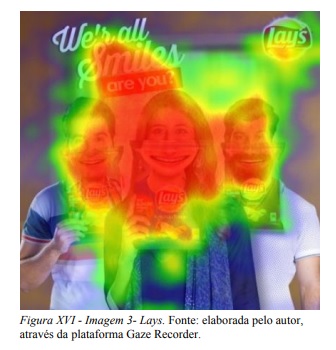
https://repositorio.ipv.pt/bitstream/10400.19/6726/1/mariana_sousa_dissertacao.pdf
This dissertation aims to expose the importance of visibility and attraction of elements in advertising, in a study of Neuromarketing. Combining marketing with the study of neuroscience, neuromarketing arose, which allows brands to study and understand why consumers choose and motivate themselves in relation to different brands in the market. In this sense, the main question and motivation of the present study arose, which is to realize, through an eye-tracking study, how the visibility and attraction of elements in advertising, influence or motivate consumers to choose certain brands, that is, the impact that these elements have. The main objectives that are intended to be achieved with this study are: 1) To contextualize neuromarketing as a study area that brings together marketing and the study of neuroscience; 2) Compare the time that respondents spend analysing each element in the advertisements; 3) Observe whether gender or age influences the observation time of the elements, or whether certain aspects are highlighted (more or less textual part, more or less images); 4) Study the relationship between the time that they observed an advertisement for a certain brand and the subsequent choice of that brand; 5) Analyse whether the visual elements in an ad motivate the purchase of the brand presented in that ad; 6) Check if older individuals establish more loyalty relationships with brands. This dissertation is divided into six chapters, in which it is intended to present all the review, research and methodology used for the preparation of this study. An opinion survey was carried out, carried out on a sample for the convenience of 100 respondents, and an eye-tracking study on the Gaze Recorder platform. The objective of the eyetracking study was to determine which elements are most important in the different advertisements presented. The survey served to complete and verify whether the most important aspects and the most observed marks in the study met the choices exposed in the respective responses. In short, the visual elements present in the studied ads, influenced, or motivated the participants’ choices, by the brands whose ads were presented. It was also concluded that respondents have a strong tendency to choose brands that remind them of the past, most of the time associated with feelings and emotions, developed by themselves or spent with the family. These results contribute to a better understanding of the influence of the elements used in advertising in different media such as Posters, Flyers, Muppies, when studying the effect of a fixed image with several elements. The main limitation of the study was its methodology, in this case the sample studied. Because it is a convenience sample, the results obtained can only be representative of the universe studied and not of the total population. The present study should also be replicated with other product categories, to validate the results presented in this dissertation. This study opens the door to future routes of research about online shopping. Using eyetracking again, studies can be developed to show how consumers can choose certain products and buy them online. A future way of investigation would also be a study of brandsense, to analyse the behaviour of consumers in relation to the stimuli used by brands.